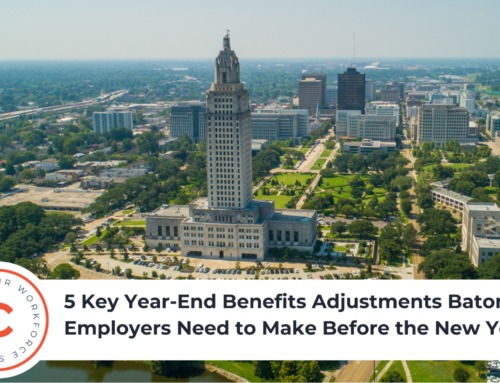Managing human resources in a nonprofit organization comes with its unique set of challenges. Unlike for-profit companies, nonprofits operate with limited budgets, a heavy reliance on volunteers, and a mission-driven culture that requires thoughtful HR practices. Despite these challenges, effective human resources management is critical to achieving the organization’s mission and ensuring long-term sustainability.
In this blog, we’ll explore the top 10 nonprofit HR best practices that can help your organization streamline its operations, stay compliant with regulations, and foster a positive work environment. By adopting these strategies, nonprofits can build a strong team of passionate employees and volunteers who are committed to making a difference.
1. Align HR Strategy with the Organization’s Mission
In a nonprofit, the organization’s mission isn’t just a tagline—it’s the guiding force behind everything. For HR teams, this means that hiring, onboarding, and managing employees should always be aligned with the nonprofit’s mission and values. This alignment not only attracts employees and volunteers who are passionate about the cause but also fosters a deep connection between the staff and the organization’s goals.
HR should ensure that job descriptions, performance evaluations, and organizational culture all reflect the mission. This reinforces the nonprofit’s identity and creates a sense of purpose that keeps employees engaged and motivated to contribute to the greater good.
2. Prioritize Compliance with Employment Laws
Nonprofit organizations are not exempt from the complex web of employment laws that govern wages, benefits, and workplace safety. Noncompliance can lead to serious legal and financial consequences that can impact the nonprofit’s ability to serve its mission. From wage laws to benefits administration, staying compliant is a top priority for any organization, but it can be especially tricky for nonprofits with limited HR resources.
Working with an HR service provider or using HR management software can help nonprofits navigate these regulations more effectively. Outsourcing compliance tasks or automating processes through technology can reduce risk and ensure that the organization remains compliant with state and federal laws.
3. Invest in Training and Development
In the nonprofit sector, budgets are often tight, but that doesn’t mean employee development should fall by the wayside. Investing in training and development helps retain talented employees and ensures that they have the skills necessary to fulfill the organization’s mission. Nonprofits can get creative by offering free or low-cost training opportunities such as webinars, peer-led workshops, or partnerships with local educational institutions.
By providing opportunities for professional growth, nonprofits can foster a culture of continuous learning, which benefits both the individual employees and the organization as a whole.
4. Implement a Clear and Consistent Onboarding Process
Onboarding is a critical step in setting up employees and volunteers for success. A well-structured onboarding process helps new hires understand the organization’s mission, values, and expectations, allowing them to hit the ground running. For nonprofits, which often operate with lean teams, onboarding can be an efficient way to get staff members up to speed quickly.
Even with limited resources, nonprofits can create effective onboarding programs by focusing on the essentials—introducing the organization’s mission, outlining roles and responsibilities, and providing the tools and training necessary for the job.
Get your Free Onboarding Guide
5. Foster an Inclusive and Supportive Culture
Nonprofits thrive when they create an inclusive and supportive workplace culture that values diversity and fosters collaboration. Creating an environment where all employees, regardless of their background, feel respected and valued is essential to building a strong team. HR should focus on promoting diversity, equity, and inclusion initiatives and ensure that policies are in place to prevent discrimination and encourage open dialogue.
A supportive culture goes beyond inclusivity—it also means creating spaces for employees to share their challenges, celebrate successes, and collaborate effectively. This not only strengthens the team but also amplifies the organization’s ability to fulfill its mission.
6. Develop a Robust Volunteer Management System
Volunteers are often the lifeblood of nonprofit organizations, contributing time, skills, and energy toward advancing the mission. However, managing volunteers effectively requires its own set of HR strategies. A structured volunteer management system can help streamline recruitment, onboarding, training, and retention, ensuring that volunteers are well-prepared and engaged.
Best practices include creating clear role descriptions for volunteers, offering flexible schedules, and providing training that aligns with both the nonprofit’s needs and the volunteer’s strengths. It’s also important to recognize volunteers regularly, showing appreciation for their contributions. A strong volunteer management system not only maximizes the impact of volunteer efforts but also enhances their experience, leading to longer-term commitment.
Learn more About our Payroll Services for Nonprofits
7. Leverage Technology for HR Efficiency
For many nonprofits, HR management can feel overwhelming, especially when resources are limited. Fortunately, technology offers solutions that can simplify many HR tasks, from payroll and benefits administration to performance tracking and compliance management. Implementing HR software can save time, reduce errors, and provide a centralized platform for managing employee and volunteer data.
There are affordable HR software solutions specifically designed for small businesses and nonprofits. These platforms can streamline administrative tasks, allowing HR teams to focus on higher-value activities like employee development and volunteer engagement. Nonprofits should explore HR technology that meets their specific needs, helping them operate more efficiently while maintaining their focus on the mission.
8. Offer Competitive and Flexible Benefits
While nonprofits may not always be able to offer salaries that compete with for-profit organizations, they can still attract and retain top talent by offering competitive and flexible benefits. Benefits packages should be designed to meet the diverse needs of employees, including health insurance, retirement plans, and paid time off. Nonprofits can also provide alternative benefits like remote work options, flexible schedules, and wellness programs, which can be particularly appealing to mission-driven employees.
Providing flexibility in how employees use their benefits can make a significant difference in job satisfaction, even when budgets are tight. This approach shows that the organization values its staff and is committed to their well-being, which can lead to higher retention rates.
9. Conduct Regular Performance Reviews
Performance reviews are an essential part of maintaining a high-performing team. Regular feedback helps employees understand how their work aligns with the organization’s mission and identifies areas for improvement. In nonprofits, performance reviews should go beyond assessing job performance—they should also connect the employee’s role to the organization’s broader impact.
To conduct effective performance reviews, nonprofits should establish clear performance metrics that reflect both the operational and mission-driven goals of the organization. Additionally, offering opportunities for employee development and setting actionable goals can ensure that reviews are constructive and motivating, rather than punitive.
10. Promote Work-Life Balance and Prevent Burnout
Nonprofit employees are often deeply passionate about the cause they work for, which can lead to overcommitment and burnout. It’s critical for nonprofit HR teams to implement policies that support work-life balance and prevent employee exhaustion. Burnout can not only affect individual well-being but also undermine the organization’s ability to fulfill its mission if turnover becomes high.
Offering flexible schedules, encouraging time off, and fostering an environment that respects work-life boundaries are all effective ways to reduce burnout. Additionally, wellness programs and mental health support can go a long way in keeping employees happy, healthy, and engaged.
Download 42 HR Templates for Nonprofits
Conclusion
Nonprofit organizations face unique HR challenges, but by implementing these best practices, they can build a strong, motivated team dedicated to advancing the mission. From aligning HR strategies with the organization’s goals to leveraging technology and promoting work-life balance, nonprofits can create a workplace that supports both the organization’s mission and its people.
By adopting these strategies, nonprofit HR teams can ensure compliance, improve retention, and enhance employee and volunteer satisfaction. If your organization is looking for help in managing these HR complexities, Coeur Workforce Solutions can provide expert guidance and tailored solutions to meet your needs.








